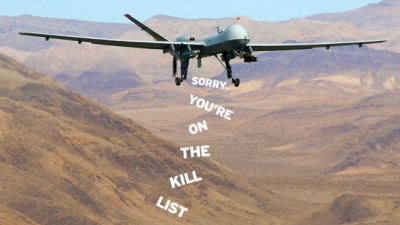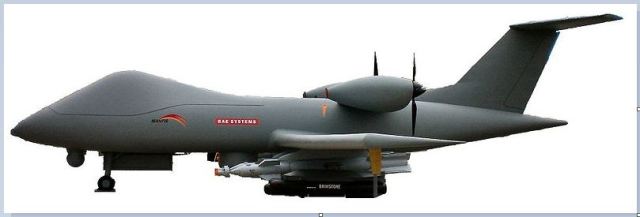Armed Drones: How Remote-Controlled, High-Tech Weapons Are Used Against The Poor ~ hehe "isn't" there a statue some~where in this Kooky Country .... says some~thin 'bout give U.S. you tired , you poor ??? NOW ..that fucking statue says we'll "drone" yer fucking ass HUH ??? & fucking STILL ole mr/mrs A ~merry~kook's ...thinks we's go~in the RIGHT ...way ...yea !

The rapidly increasing use of aerial robot weapons in the so-called ‘war against terrorism’ is raising many ethical and legal questions. Drones, known in military-speak as ‘UAVs’ or ‘Unmanned Aerial Vehicles’ come in a range of sizes, from very small surveillance aircraft, which can be carried in a soldier’s rucksack and used to gather battlefield intelligence, to full-scale, armed versions that can carry a sizable payload of missiles and laser-guided bombs.
The use of the latter type of UAV in Iraq, Afghanistan, Pakistan and elsewhere has aroused great concern, since it often entails considerable ‘collateral damage’ – in other words, the killing of innocent civilians in the vicinity of the targeted ‘terrorist’ leaders. The legality of their use in carrying out what are effectively extra-judicial executions, outside any recognisable battlefield, is also a raising serious concern.
Background
UAVs have been around for at least 30 years in one form or another. Initially they were used for surveillance and intelligence gathering (S&I); conventional aircraft would act on the data gathered to deliver a lethal attack. UAVs are still used in this role but, in the last decade, have themselves been fitted with missiles and guided bombs in addition to their S&I technology. These modified versions are sometimes referred to as UCAVs where ‘C’ stands for ‘Combat’.
The first recorded ‘kill’ by a UCAV, a CIA-operated ‘Predator’ drone, occurred in Yemen in 2002. In this incident a 4×4 vehicle allegedly carrying an Al-Qaida leader and his five companions was attacked and all the occupants annihilated.1 It is not known whether the government of Yemen approved these executions in advance.
Worldwide military interest…
As might be expected, the US military lead the development and use of UAVs, especially after 9/11, which led to a rapid escalation in drone production and deployment. Currently they have about 200 ‘Predator’ armed drones and about 20 of its big brother the ‘Reaper’ drone in service in the so-called AF-PAK (Afghanistan-Pakistan) theatre.
Some of these drones have been leased or sold to UK forces, also for use in Afghanistan, where they have carried out at least 84 flight missions to date. The Reaper can carry up 14 ‘Hellfire’ missiles or a mixture of missiles and guided bombs.
Perhaps unsurprisingly, Israel is also a major developer of UAVs, which it has used in Palestinian territories. There are a number of documented instances2 of the Israeli military allegedly using them to target Hamas leaders, during Israel’s attack on Gaza in 2008-9, which resulted in many fatal civilian casualties. One of those killed was the 10-year old boy, Mum’min ‘Allaw. According to Dr Mads Gilbert, a Norwegian doctor who worked at Gaza’s al-Shifa Hospital during the attack on Gaza: “Every night the Palestinians in Gaza re-live their worst nightmares when they hear drones; it never stops and you are never sure if it is a surveillance drone or if it will launch a rocket attack. Even the sound of Gaza is frightful: the sound of Israeli drones in the sky.”
Israeli arms company Elbit Systems, in a consortium with French arms company Thales has won a contract to supply the British army with a surveillance drone called ‘Watchkeeper’. This is an improved version of an existing Israeli drone, Hermes 450, already used by UK forces in Afghanistan. Its Wankel engine is manufactured in Litchfield, UK by UEL Ltd, a wholly-owned subsidiary of Elbit Systems. The Watchkeeper is said to be able to detect footprints on the ground from above the clouds.
Many other countries also have drone programs: Russia, China and various EU consortia have models under development. Even Iran has an operational drone, while Turkey is negotiating with Israel to be its supplier.3
Of course, the UK has its own extensive, independent program of drone development, coordinated and led by BAE Systems. The most important ones are the ‘Taranis’4 and ‘Mantis’5 armed drones which are also said to be ‘autonomous’, that is, capable of piloting themselves, selecting targets and even possibly engaging in armed combat with other aircraft.
Taranis uses ‘stealth’ technology to avoid detection and looks like a smaller version of the US B2 ‘Stealth’ bomber. Taranis was revealed, at some distance away from the public, at Warton Aerodrome in Lancashire in July 2010. TV reports emphasised its possible civilian use for police work . It seems somewhat over-specified for this, given that it weighs eight tonnes, has two weapons bays and cost £143m to develop. Flight trials are expected to begin in 2011.

Mantis is closer in appearance to existing armed drones but more advanced in its specification and powered by two Rolls Royce model 250 turboprop engines (see photo). Its first test flight took place in October 2009.
As discussed in the SGR report Behind Closed Doors, UK academics have been involved in BAE-led drone development through the £6m FLAVIIR programme, jointly funded by BAE and the Engineering and Physical Sciences Research Council.6 Ten UK universities are involved, including Liverpool, Cambridge and Imperial College London.
… and the reasons for it
The military’s interest in drones is not difficult to explain. For one thing, drones are relatively cheap, each one costing about one tenth of the cost of a conventional multi-role combat aircraft. And they can stay in the air for much longer than conventional aircraft – typically upwards of 24 hours. At present they are ‘piloted’ remotely, often from a position many thousands of miles away from the combat zone, using satellite communications. The drones used by US and UK in AF-PAK are controlled from trailers at Creech Airforce base in the Nevada desert. Thus the pilots are safe, can avoid stress and fatigue, and are much cheaper to train. Since the drones carry multi-sensor surveillance systems, the multiple streams of data can be monitored in parallel by a team of operators rather than by a single pilot. In short, in the straitened circumstances of the ongoing economic recession, drones give you a ‘bigger bang for your buck’. According to the defence correspondent of the Telegraph newspaper, Sean Rayment,
armed drones are “the most risk-free form of combat to be invented”, a statement that, of course, completely sidesteps the mortal risks to innocent civilians.Legal and ethical dimensions
There have been a number of legal challenges to the use of drones. The American Civil Liberties Union (ACLU) and the Centre for Constitutional Rights (CCR) have filed a lawsuit challenging the legality of their use outside zones of armed conflict. They argue that, except in very narrowly defined circumstances, “targeted killing amounts to the imposition of a death penalty without charge, trial, or conviction”, in other words, the complete absence of due process.7
The UN Special Rapporteur on extrajudicial, summary or arbitrary executions, Philip Alston, says in his May 2010 report8 that, even in the area of armed conflict,
“the legality of targeted killing operations is heavily dependent on the reliability of the intelligence on which it is based”.It has been shown in many instances that this is intelligence is often faulty. Alston also states:
“Outside the context of armed conflict the use of drones for targeted killing is almost never likely to be legal,” adding that, “in addition, drone killing of anyone other than the target (family members or others in the vicinity, for example) would be an arbitrary deprivation of life under human rights law and could result in State responsibility and individual criminal liability.”Even the most conservative estimates suggest that at least a third of the deaths caused by drone strikes in the AF-PAK military theatre have been non-combatants. Some estimates put the proportion much higher. In one case, there were 50 non-combatants killed for each alleged militant killed. This oversight is emphasised in an issue of the Peacemaker Briefing9: “The excitement about the low-risk death dealing capability of drones in defence circles, allied to the view that attacks are precisely targeted and accurate, seems to overlook the fact that at least 1/3 of those killed are probably civilians.”
Another important feature of the use of drones is that they appear to be almost tailor-made for use against poverty-stricken people who, for various reasons, may be resisting the will of a technologically-advanced power. Such people are variously described as ‘terrorists’ or ‘insurgents’ but may simply be striving to control their own resources and political destiny. Often they will have limited or no advanced technological capability. It is difficult to see that drones could be used effectively on the territory of a technologically-advanced power since they could be shot down by missiles, conventional fighters, or even other armed drones. Even stealth technology does not give 100% invisibility, as demonstrated by the downing of a B2 bomber during the NATO bombing of Serbia.
Conclusion
Drones should be seen as a very significant issue for SGR members as they can only be developed using the most advanced, science-based, technological resources, placed at the service of the military. The uses of drones often have very dubious legality, and the ethics of providing advanced, technological weaponry for use against the most impoverished people on the planet needs no comment.
Dr David Hookes is honorary
Senior Research Fellow in the Computer Science Department at Liverpool
University. He is also a member of SGR’s National Co-ordinating
Committee.
Title: Mock-up of BAE Systems Mantis armed drone (2008)Credit: Mike Young
References
(web links correct as of 20 October 2010)
1. BBC News (2002). CIA ‘killed al-Qaeda suspects’ in Yemen. 5 September. http://news.bbc.co.uk/1/hi/world/middle_east/2402479.stm
2. Human Rights Watch (2009). Drone-launched attacks on civilians in Gaza. 30 June. http://www.hrw.org/en/node/84077/section/5
4. Wikipedia (2010). BAE Taranis http://en.wikipedia.org/wiki/BAE_Taranis
5. Wikipedia (2010). BAE Mantis. http://en.wikipedia.org/wiki/BAE_Mantis
6. Langley C, Parkinson S, Webber P (2008). Behind Closed Doors. Scientists for Global Responsibility. http://www.sgr.org.uk/publications/behind-closed-doors
7. Romero A D, Warren V (2010). Sentencing Terrorism Suspects to Death – without Trial. Information Clearing House. http://informationclearinghouse.info/article26307.htm
8. Alston P (2010). Report of the UN Special Rapporteur on Extrajudicial, summary, or arbitrary executions. A/HRC/14/24.Add.6 [is this sufficient information for readers to access this report? Unfamiliar with format.]
9. The Fellowship of Reconciliation (2010). Drone Wars – Below the public radar? Peacemaker Briefing no. 08. http://www.for.org.uk/files/PB8WEB.pdf
Further reading
Webb D, Wirble L, Sulzman,
W (2010). From Space no one can watch you die. Peace Review, A Journal
of Social Justice. Vol 22, Issue 1, pp31-39.
Singer P W (2009). The Robotics Revolution and Conflict in the 21st Century. The Penguin Press, New York.
The New America Foundation
website, which is updated regularly with research and statistics about
casualties from drone strikes: http://counterterrorism.newamerica.net/drones.
The original source of this article is DRONE WARFARE
Copyright © Dr. David Hookes, DRONE WARFARE, 2017
No comments:
Post a Comment